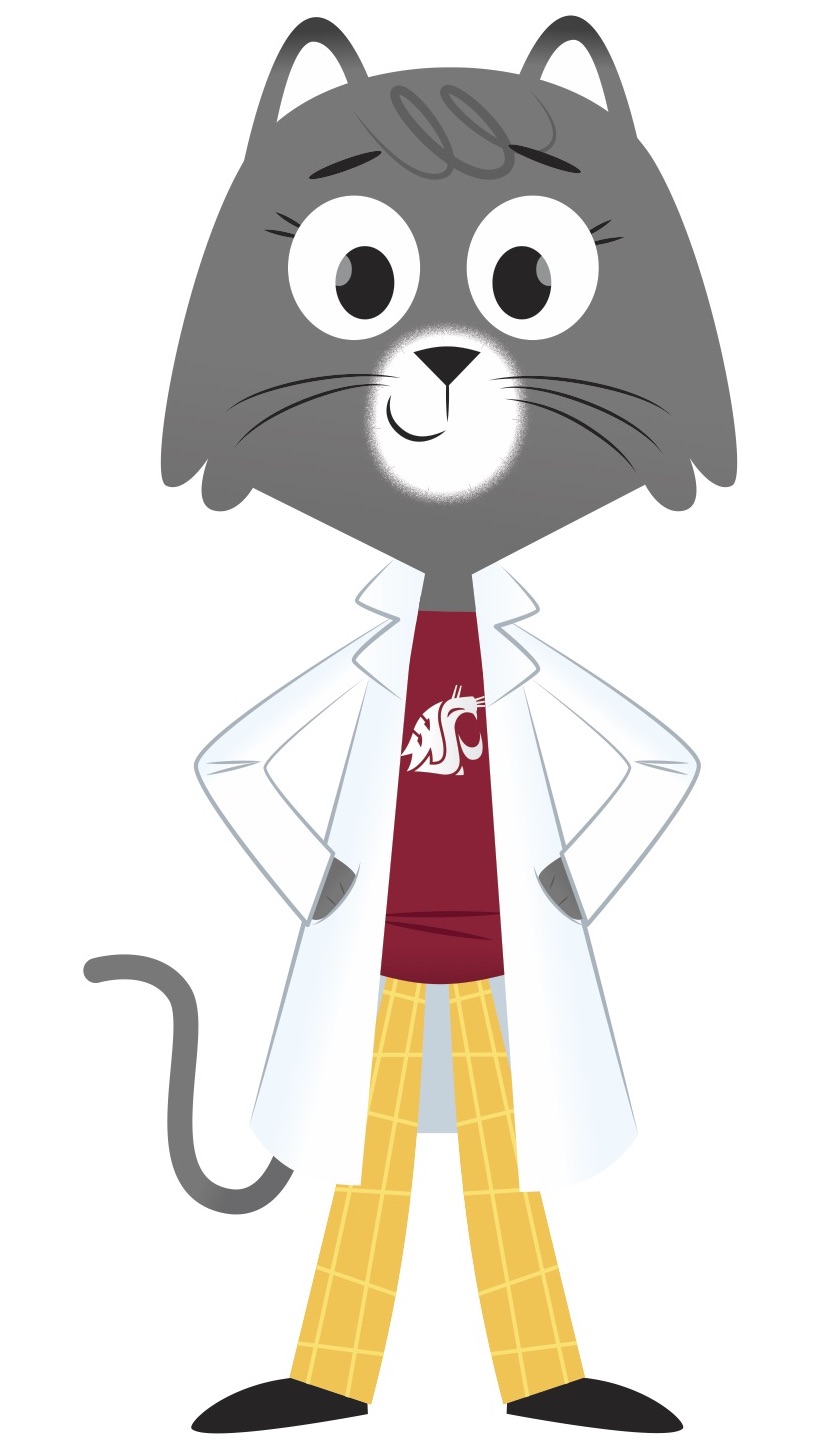Dear Presley and Brianna,
So far, we’ve investigated how recyclables like plastic, aluminum, and paper can end up in the trash. If our clothes get damaged, or we simply outgrow them, we might toss them in the trash, too. Or send them to a thrift shop. Either way, they often end up buried in a landfill.
 But my friend and Washington State University researcher Hang Liu imagines a different future for our used clothes. In her lab, she and her team are coming up with creative ways to recycle cotton into a new fiber.
But my friend and Washington State University researcher Hang Liu imagines a different future for our used clothes. In her lab, she and her team are coming up with creative ways to recycle cotton into a new fiber.
My own lab coat is made of cotton. If you look at the tags on your clothes, maybe you’ll see some of them are also made from cotton. Cotton comes from a plant and is a natural fiber made up of lots of different parts that we call molecules.
Recycling in the lab
As we learned last week, we can use heat in the recycling process to break down materials. However, the molecules that make up cotton stand up to heat really well. This has made it hard to recycle cotton in the past. Instead of using heat, Liu and the team created a mix of environmentally-friendly chemicals to dissolve the cotton fabrics.
Using a machine they built in the lab, they can transform those molecules back into a new fiber that can be woven into new clothes. The machine in their lab has five holes that spin out tiny fibers. But one day this method could be used in even bigger machines to create even more fiber for clothes.
Liu even showed me a spool of blue fiber made out of denim from an old pair of jeans. Denim is just one of many cotton products that can be recycled with this new process.
Keeping clothes out of landfills
In the U.S., an adult discards about 68 pounds of textiles, cloth or woven fabric, every year. About at least 75 percent of that eventually reaches a landfill.
Liu and her team are excited to be able to recycle old cotton materials like clothes, sheets, and towels into new fiber— over and over again. Their invention will help keep more waste out of landfills.
Liu reminds me that finding new ways to recycle clothes is important if we want to meet the needs of people today while also making sure the next generations have what they need in the future.
One question that remains is what to do with the zippers and buttons on these recycled cotton clothes, Liu says. Who knows, maybe you can help come up with a creative way to recycle clothes or fabric. After all, recycling never goes out of style.